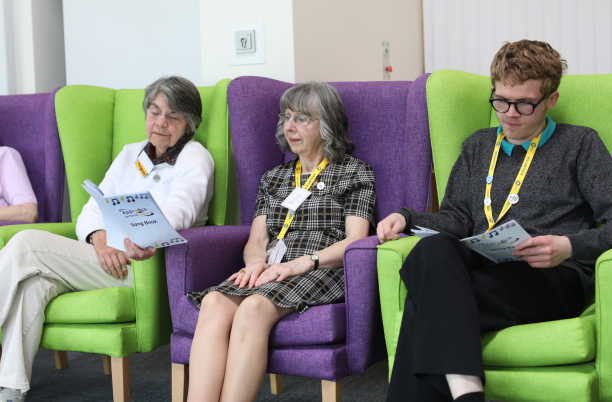
Community Volunteering hub

The Community Volunteering hub offers information and support for hospices about launching and improving their community volunteer programmes.

What is Community Volunteering?
The last few years have seen some very significant changes in hospice volunteering as volunteers have become increasingly involved in the direct support of people with palliative and end of life care (PEOLC) needs in the community, along with their families and carers.
This resource hub is informed by evidence gathered from a survey of hospice community volunteering undertaken by Hospice UK.
For the purposes of the resource, community volunteering is defined as "volunteering, undertaken out with the hospice building, directly supporting people with palliative and end of life care needs in their homes."
Benefits of Community Volunteering
Findings in the Analysis Report suggest that community volunteering has many benefits to people with PEOLC needs, families and carers, staff, organisations and volunteers.
|
People with PEOLC needs: - Reduction in isolation through |
Families/carers: - Respite from caring. |
|
Volunteers: - Personal development/ experience for employment. |
Staff and organisations: - A better understanding of PEOLC needs and their families. - Stronger connection to the community. |
Create a Community Volunteering programme

Read the Analysis Report
The aims of the project were to:
- Map the extent of community volunteering activity in hospice organisations.
- Gather information about the services already in place and identify any barriers to developing such services.
- Create an electronic resource to help the development of voluntary support in this context.
Language and terminology
Throughout the project, we have been very aware of language and the influence that words can have on the relationship between people.
In many of the community volunteering programmes the emphasis is on 'doing with' rather than 'doing to', and the principle underpinning this resource is that volunteers, people with end of life care needs, families and carers are partners in the relationship, each meeting and responding to one another as individuals.
For this reason, the resource intentionally does not use the term 'patient' but talks about 'a person/people with palliative and end of life care (PEOLC) needs.'
The word 'patient' only appears when used in quotes or case studies.







